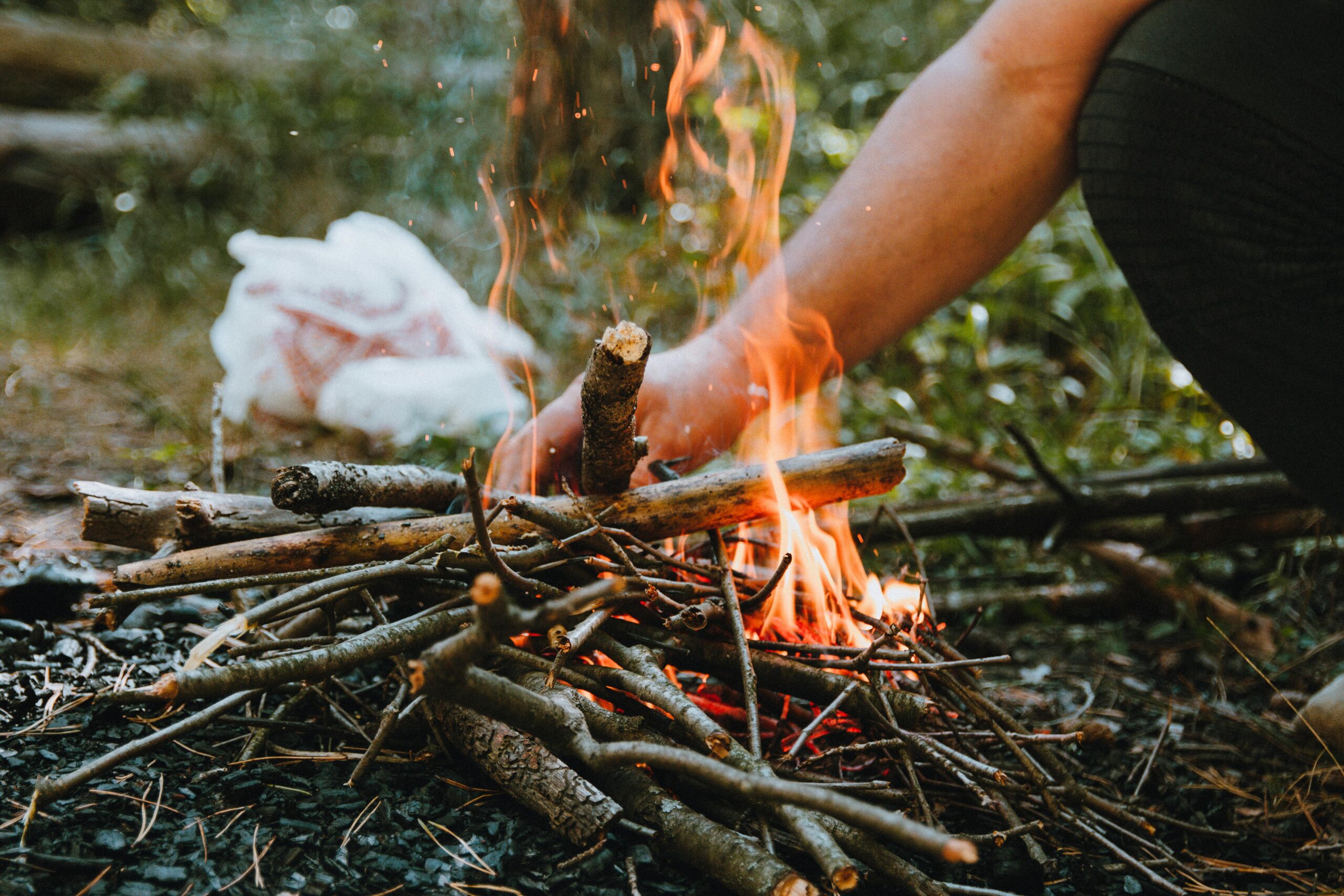Fire is an essential element of survival in the great outdoors. It provides warmth, allows you to cook food, and can be a critical signal for rescue. However, starting a fire in the wild can be challenging, especially under adverse weather conditions. This guide will explore various fire-starting techniques that work in different weather scenarios, ensuring you’re prepared for any situation.
The Basics of Fire-Starting
Before diving into specific techniques, it’s important to understand the fundamentals of fire-starting. A successful fire requires three key components: fuel, heat, and oxygen. Here’s a brief overview:
Fuel: This includes tinder, kindling, and larger logs. Tinder is the initial material that catches fire quickly, such as dry leaves, pine needles, or cotton balls. Kindling is slightly larger and helps sustain the flame, like small sticks or twigs. Finally, larger logs keep the fire burning once it’s established.
Heat: This is the spark or flame used to ignite the tinder. Sources of heat can vary, including matches, lighters, or a ferrocerium rod.
Oxygen: A fire needs air to burn. Ensure your fire structure allows for adequate airflow.
Fire-Starting Techniques for Various Weather Conditions
1. Fire-Starting in Dry Conditions
When the weather is dry, starting a fire is relatively straightforward. Follow these steps for an efficient fire:
- Collect dry tinder, kindling, and fuel logs. Look for materials that snap easily, indicating they are dry.
- Arrange your materials in a structure that promotes airflow. The teepee and log cabin structures are popular choices.
- Use matches or a lighter to ignite the tinder. Add kindling gradually until the fire is strong enough to support larger logs.
Tips: In dry conditions, it’s crucial to control the fire to prevent accidental spread. Clear the area of flammable debris and keep water or dirt nearby to extinguish the fire if necessary.
2. Fire-Starting in Wet Conditions
Wet conditions pose a significant challenge, but it’s still possible to start a fire with the right approach.
- Look for dry tinder under logs, inside tree stumps, or in sheltered areas. Birch bark, even when wet, can be peeled to reveal dry layers underneath.
- Clear a dry area for your fire. Create a platform with dry sticks to keep your fire off the wet ground.
- Waterproof matches, a ferro rod, or a lighter with a windproof flame are ideal for wet conditions. Carry a fire starter kit with tinder that ignites easily, such as petroleum jelly-soaked cotton balls.
- Start with small, dry tinder and kindling. Create a teepee or log cabin structure that allows air to circulate. Add larger, wet wood gradually as the fire builds strength.
Tips: Keep your firewood sheltered from rain. Use your body or gear to protect the fire from wind and rain as it starts.
3. Fire-Starting in Windy Conditions
Wind can be both a friend and foe when starting a fire. While it provides oxygen, it can also extinguish your flame quickly.
- Create a natural or artificial windbreak to protect your fire. Use rocks, logs, or a tarp to shield the flames.
- Construct a fire lay that minimizes exposure to wind. A trench fire or Dakota fire hole can help contain the flames and provide wind protection.
- Use a windproof lighter or waterproof matches. Shield the tinder as you ignite it, using your body or gear to block the wind.
Tips: Avoid building your fire in open, exposed areas. Use natural barriers like hills or dense vegetation for additional wind protection.
4. Fire-Starting in Snowy Conditions
Starting a fire in snow requires additional preparation to ensure success.
- Clear snow down to the bare ground if possible. If not, create a platform of green logs or rocks to insulate your fire from the snow.
- Gather dry materials sheltered from the snow. Birch bark, pine needles, and resin-rich wood are excellent choices.
- Construct a log cabin or teepee structure on your platform. Ensure air can circulate to maintain the fire’s intensity.
- Use a reliable fire starter that can handle moisture, like a ferro rod or waterproof matches. Start with small, dry tinder and gradually add kindling and larger logs.
Tips: Keep your firewood off the ground and protected from snow. Use branches or a tarp to shield your fire from falling snow.
Emergency Fire-Starting Techniques
In emergencies, traditional fire-starting methods may not be viable. Here are some alternative techniques:
- Use a battery (AA or larger) and fine steel wool to create a spark. Stretch the wool and touch both battery terminals to ignite it.
- On sunny days, use a magnifying glass to focus sunlight on dry tinder, creating enough heat to ignite it.
- This primitive method involves rubbing a stick against a groove in a piece of wood to create friction and heat.
Mastering fire-starting techniques for various weather conditions is crucial for any outdoor enthusiast. By understanding the basics and practicing different methods, you’ll be prepared to start a fire in dry, wet, windy, and snowy conditions. Remember, fire safety is paramount. Always clear the area of flammable materials, keep water or dirt nearby to extinguish the fire, and never leave it unattended.
Equip yourself with the right tools and knowledge, and you’ll be able to enjoy the warmth, safety, and comfort a fire provides, no matter the weather. Happy adventuring, and stay safe out there!


Leave a Reply